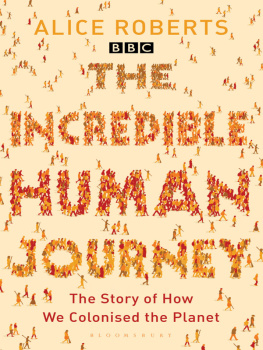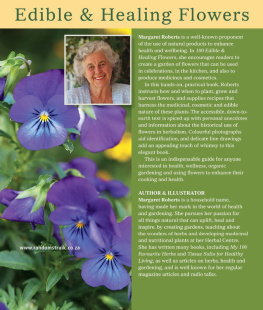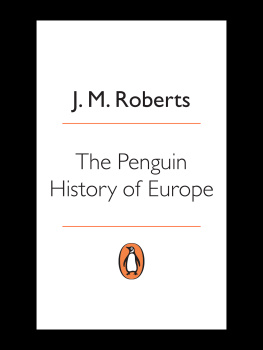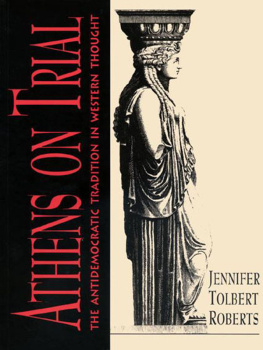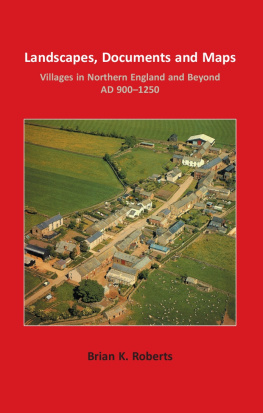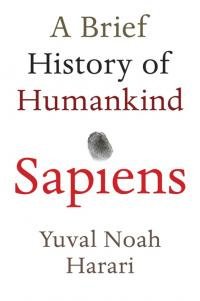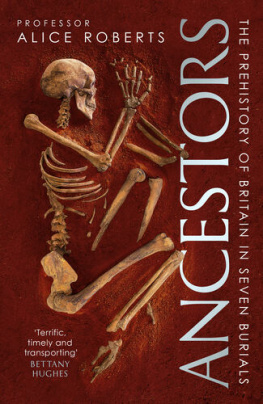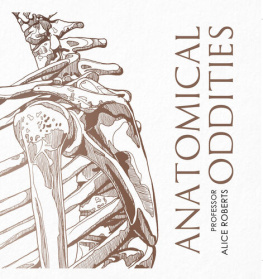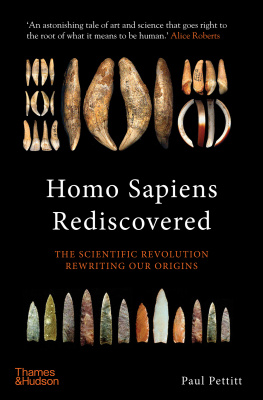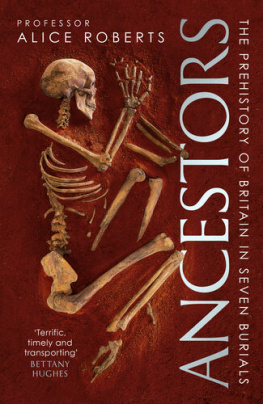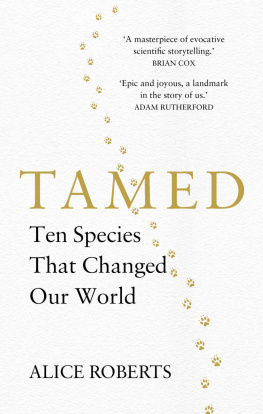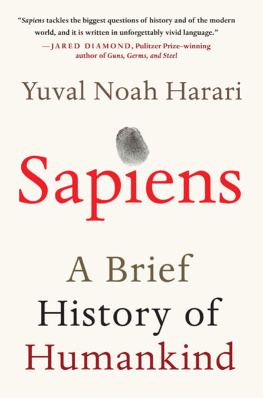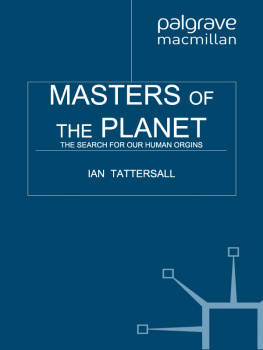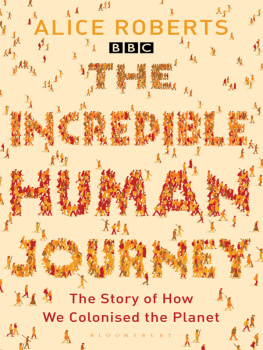Try to imagine the world in which humans have lived for the overwhelmingmajority of our existence, a world without cities, settled villages, or evenpermanent residences, a world without farmed fields and crops, withoutpossessions larger than those which we could easily carry with us, and witheverything we needed in daily life all of our tools, weapons and clothingproduced by ourselves or by those within our small social bands. We did notgrow food or have others grow it for us, but instead exclusively relied upon ourown knowledge of the surrounding natural environment to survive, foragingfor plant foods and scavenging, hunting or fishing for meat.
D. J. Cohen
To Jonathan Musgrave and Kate Robson-Brown,
wise friends and mentors
First published in Great Britain 2009
Text 2009 by Alice Roberts
Illustrations 2009 by Alice Roberts
Maps 2009 by Dave Stevens
This electronic edition published 2010 by Bloomsbury Publishing Plc
The right of Alice Roberts to be identified as the author of this work has been asserted by her in accordance with the Copyright, Designs and Patents Act 1988
The quotation on page vii by D. J. Cohen taken from The Origins of Pottery and Agriculture by Yoshinori Yashuda is reprinted by permission of Roli Books. The quotations on pages 144, 149 and 334 from The Songlines by Bruce Chatwin, published by Jonathan Cape, are reprinted by permission of The Random House Group and Aitken Alexander Associates.
By arrangement with the BBC
The BBC logo is a trademark of the British Broadcasting Corporation and is used under licence. BBC logo BBC 1996.
All rights reserved. You may not copy, distribute, transmit, reproduce or otherwise make available this publication (or any part of it) in any form, or by any means (including without limitation electronic, digital, optical, mechanical, photocopying, printing, recording or otherwise), without the prior written permission of the publisher. Any person who does any unauthorised act in relation to this publication may be liable to criminal prosecution and civil claims for damages.
Bloomsbury Publishing Plc, 36 Soho Square, London W1D 3QY
A CIP catalogue record for this book is available from the British Library
eISBN: 978-1-40881-091-0
www.bloomsbury.com/aliceroberts
Visit www.bloomsbury.com to find out more about our authors and their books. You will find extracts, authors interviews, author events and you can sign up for newsletters to be the first to hear about our latest releases and special offers.
Contents
We are very familiar with the idea that humans are everywhere; that wherever you go in the world you will probably find peoplethere already. We are an unusual species in that we have a near-global distribution. And although people around the world may look quitedifferent from each other, and speak different languages, they can nevertheless recognise each other as distant cousins.
But where and when did our species first appear? What are the essential characteristics of our species? And how did people end up being everywhere? These are rephrasings of fundamental questions. Who are we? What does it mean to be human? Where do we come from? For thousands of years, such questions have been explored through philosophy and religion, but the answers now seem to lie firmly within the grasp of an empirical approach to the world and our place within it. By peering deep into our past and dragging clues out into the light, science can now provide us with some of the answers to the questions that people have always asked.
They are questions that have always captivated me. As a medical doctor and anatomist (I lecture in anatomy on the medicalcourse at Bristol University), I am fascinated by the structure and function of the human body, and the similarities and differences between us and other animals. We are certainly apes; our anatomy is incredibly similar to that of our nearest relations,chimpanzees. I could put a chimpanzee arm bone, or humerus, in an exam for medical students and they wouldnt even noticethat it wasnt human.
But there are obviously things that mark us out not as special creations, but as a species of African ape that has, quiteserendipitously, evolved in ways that enabled our ancestors to survive, thrive and expand across the whole world. There areaspects of anatomy that are entirely unique to us; unlike our arms, our spines, pelvis and legs are very different from those of our chimp cousins, and no one would mistake a human skull for that of another African ape. Its avery distinctive shape, not least because we have such enormous brains for the size of our bodies. And we use our big brainsin ways that no other species appears to.
Unlike our closest ape cousins, we make tools and manipulate our environments to an extent that no other animal does. Althoughour species evolved in tropical Africa, this ability to control the interface between us and our surroundings means that weare not limited to a particular environment. We can reach and survive in places that should seem quite alien to an Africanape. We have very little in the way of fur, but we can create coverings for our bodies that help to keep us cool in very hotclimates and warm in freezing temperatures. We make shelters and use fire for warmth and protection. Through planning andingenuity, we create things that can carry us across rivers and even oceans. We communicate, not just through complicatedspoken languages but through objects and symbols that allow us to create complex societies and pass on information from generationto generation, down the ages. When did these particular attributes appear? This is a key question for anyone seeking to define our species and to track the presence of our ancestors through the traces of their behaviour.
The amazing thing is it is possible to find those traces, those faint echoes of our ancestors from thousands and thousands of years ago. Sometimes it could be an ancient hearth, perhaps a stone tool, that shows us where and how our forebears lived. Occasionallywe find human remains preserved bones or fossils that have somehow avoided the processes of rot and decay and fragmentationto be found by distant descendants grubbing around in caves and holes in the ground, in search of the ancestors.
Ive always been intrigued by this search, by the history that can be reconstructed from the few clues that have been leftbehind. And at this point in time, we are very lucky to have evidence emerging from several different fields of science, comingtogether to provide us with a compelling story, with a better understanding of our real past than any humans have ever hadbefore. From the study of bones, stones and the genes within our living bodies comes the evidence of our ancestors, of whowe are, of where we came from and of how we ended up all over the world.
When the BBC offered me the opportunity to follow in the footsteps of the ancients, to delve into the past, to meet people,see artefacts and fossils for myself and visit the places that seem most sacred to those searching for real meanings, I couldntwait to get started. I took a year off from teaching anatomy and looking at medieval bones in the lab, and set off on a worldwidejourney in search of our ancestors.
The Human Family Tree
My journey would take me all around the world, starting in Africa and then following in the footsteps of our ancestors intoAsia and around the Indian coastline, all the way to Australia, north into Europe and Siberia, and, eventually, to the lastcontinents to be peopled: the Americas.
Modern humans are just the latest in a long line of two-legged apes, technically known as hominins. Weve grown used to thinkingof ourselves as rather special, and a quick glance at the human family tree shows us that were in a rather unusual positionat the moment, being (as far as we know) the only hominin species alive on the planet. Going back into prehistory, the familytree is quite bushy, and there were often several species knocking around at the same time. By 30,000 years ago, it seemsthere were only two twigs left on the hominin family tree: modern humans and our close cousins, the Neanderthals. Today, onlywe remain.
Next page
